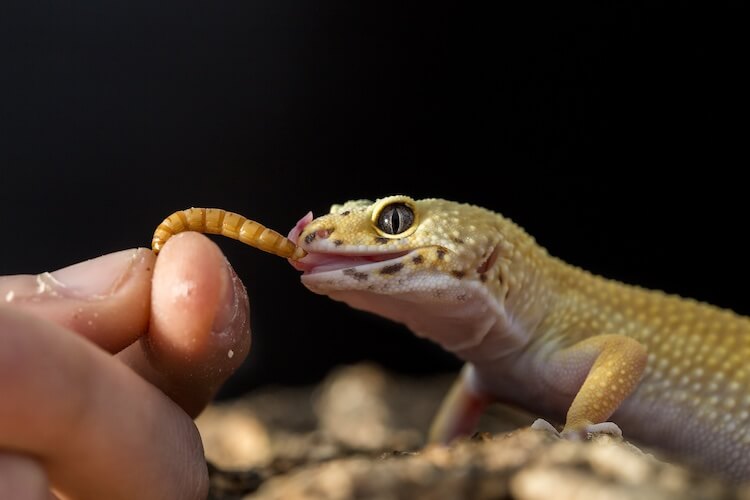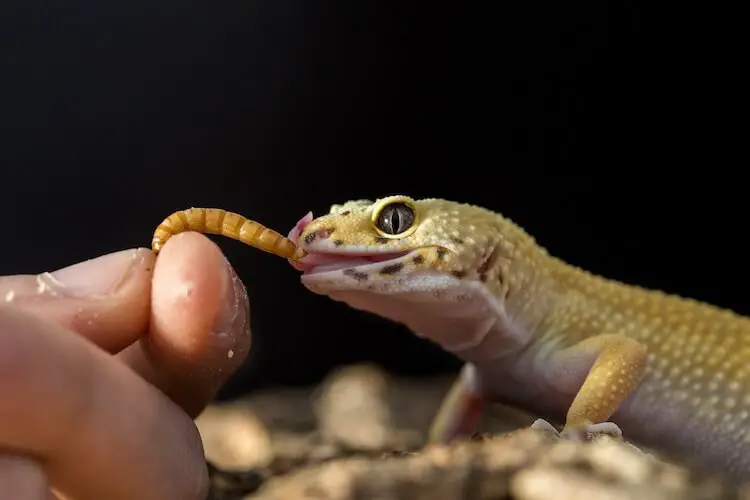Leopard geckos are undoubtedly one of the most popular reptiles in the pet trade. Their cute appearance, docile nature, and ease of care make them a popular choice for beginners and seasoned reptile keepers alike. However, when it comes to their diet, many people are left wondering – are leopard geckos carnivores?
The short answer is yes, leopard geckos are carnivores. In the wild, they primarily feed on insects such as crickets, mealworms, and waxworms. In captivity, their diet can be supplemented with other insects such as Dubia roaches and black soldier fly larvae. In this article, we will explore the reasons why leopard geckos are carnivores and what you need to know to provide them with a healthy and balanced diet.

Are Leopard Geckos Carnivores?
Leopard geckos are one of the most popular pet reptiles around the world. They are known for their docile nature and easy-to-care-for requirements. But, like all animals, they have specific dietary needs. One of the most commonly asked questions about leopard geckos is whether they are carnivores or not. In this article, we will explore the diet of leopard geckos and answer the question of whether they are carnivores.
What Do Leopard Geckos Eat?
Leopard geckos are insectivores, which means that they primarily eat insects. In the wild, they feed on a variety of insects, such as crickets, mealworms, waxworms, and roaches. In captivity, their diet can be supplemented with other insects, such as superworms and black soldier fly larvae. It is essential to provide a balanced diet to ensure that they receive all the necessary nutrients.
Leopard geckos are not capable of digesting plant matter, so it is crucial to avoid feeding them vegetables or fruits. Feeding them the wrong diet can lead to digestive issues and health problems.
Why Are Leopard Geckos Considered Carnivores?
Leopard geckos are classified as carnivores because they require a diet that consists mainly of animal protein. Their digestive system is adapted to digesting insects, and they lack the enzymes necessary to break down plant matter. Unlike some other reptiles, they do not require a specific ratio of animal to plant protein in their diet.
Benefits of a Carnivorous Diet for Leopard Geckos
A carnivorous diet provides leopard geckos with the necessary nutrients for growth and maintenance. Insects are rich in protein, which is essential for building and repairing muscle tissue. They also contain other nutrients, such as vitamins and minerals, that are necessary for overall health.
A carnivorous diet is also more natural for leopard geckos. Insects are a part of their natural diet in the wild, so feeding them a diet that mimics their natural diet is beneficial for their overall health and well-being.
Vs. Herbivorous or Omnivorous Diets
As mentioned earlier, leopard geckos are not capable of digesting plant matter, so feeding them a herbivorous or omnivorous diet can lead to health problems. Feeding them the wrong diet can cause digestive issues, such as impaction, and can lead to malnutrition.
In contrast, feeding them a carnivorous diet provides all the necessary nutrients and is more natural for them. While omnivorous diets can be suitable for some reptiles, leopard geckos are not one of them.
Feeding Schedule for Leopard Geckos
Leopard geckos should be fed every other day, with juveniles requiring more frequent feedings. It is essential to provide a variety of insects to ensure that they receive a balanced diet. In addition, the insects should be appropriately sized for the gecko, as feeding them insects that are too large can cause digestive issues.
It is also essential to dust the insects with a calcium supplement to prevent calcium deficiencies. Leopard geckos require adequate calcium for healthy bones and egg production.
What to Avoid Feeding Leopard Geckos
While leopard geckos have a relatively simple diet, there are still some things to avoid feeding them. As mentioned earlier, they should not be fed vegetables or fruits, as they cannot digest them. In addition, they should not be fed wild-caught insects, as they may contain pesticides or parasites.
Leopard geckos should also not be fed insects that are too large, as this can cause digestive issues. Lastly, they should not be fed pinky mice or other vertebrates, as this can lead to health problems.
Conclusion
In summary, leopard geckos are carnivores and require a diet that consists mainly of insects. Feeding them a balanced diet that mimics their natural diet is essential for their overall health and well-being. It is also crucial to avoid feeding them the wrong diet and to provide them with a feeding schedule that meets their nutritional needs. By following these guidelines, you can ensure that your leopard gecko remains healthy and happy.
Frequently Asked Questions
Are Leopard Geckos Carnivores?
Yes, leopard geckos are carnivores. They feed on live insects such as crickets, mealworms, and waxworms. In the wild, they may also consume small rodents, lizards, and insects. It is important to feed your leopard gecko a varied diet to ensure they receive all the necessary nutrients.
Leopard geckos have unique digestive systems that require them to eat live prey. They do not have teeth for chewing, so they swallow their food whole. Make sure to provide appropriately sized prey for your gecko based on their size and age. It is also important to gut-load the insects with nutritious food before feeding them to your gecko.
What Happens if I Feed My Leopard Gecko Vegetables?
Leopard geckos are obligate carnivores, meaning they require a diet consisting solely of animal protein. Feeding them vegetables or fruits can lead to digestive problems, nutrient deficiencies, and even death. Their digestive systems are designed to break down and process animal protein, not plant matter.
If you are looking to add variety to your leopard gecko’s diet, consider offering different types of live insects. You can also sprinkle calcium and vitamin supplements on their food to ensure they are receiving all the necessary nutrients.
How Often Should I Feed My Leopard Gecko?
Young leopard geckos should be fed daily, while adults can be fed every other day. Offer them as many appropriately sized insects as they can eat in 10-15 minutes. Remove any uneaten insects after feeding to prevent them from bothering your gecko or hiding in the enclosure.
It is important to monitor your gecko’s weight and adjust their feeding schedule accordingly. Overfeeding can lead to obesity and health problems, while underfeeding can lead to malnourishment.
What Types of Insects Can I Feed My Leopard Gecko?
Leopard geckos can be fed a variety of live insects, including crickets, mealworms, waxworms, and roaches. It is important to provide appropriately sized prey based on your gecko’s size and age.
Try to vary their diet to ensure they receive all the necessary nutrients. For example, crickets are high in protein but low in fat, while waxworms are high in fat but low in protein. You can also gut-load the insects with nutritious food before feeding them to your gecko.
Do Leopard Geckos Need Water?
Yes, leopard geckos need access to clean water at all times. They drink by licking droplets of water off their skin, so provide a shallow dish of water in their enclosure. Change the water daily and clean the dish regularly to prevent bacteria buildup.
Leopard geckos also require a humid environment to aid in shedding. You can provide a humid hide or mist their enclosure daily to maintain proper humidity levels.
What Fruit & Salad Can Leopard Geckos Eat? | FAQ FRIDAYS
In conclusion, leopard geckos are undoubtedly carnivores. Their diet consists mainly of insects, such as crickets and mealworms, and they require a high protein intake to maintain their health and well-being. As such, it’s essential to feed them a balanced diet that meets their nutritional needs.
It’s also worth noting that while leopard geckos are carnivores, they are not indiscriminate eaters. They have specific preferences when it comes to the size and type of prey they consume. For example, they tend to prefer smaller insects that are easier to catch and swallow.
Finally, it’s essential to provide your leopard gecko with a comfortable and stress-free environment. This includes a suitable temperature and humidity level, as well as a clean and spacious enclosure. By meeting these basic needs, you can ensure that your leopard gecko thrives and remains healthy for years to come.


